- Home
- Ramachandra Guha
Patriots & Partisans
Patriots & Partisans Read online
Ramachandra Guha
Patriots and Partisans
CONTENTS
~
Dedication
Preface: The Case for Polemical Moderation
PART I: DEBATING DEMOCRACY
1. Redeeming the Republic
2. A Short History of Congress Chamchagiri
3. Hindutva Hate Mail
4. The Past and Future of the Indian Left
5. The Professor and the Protester
6. Gandhi’s Faith and Ours
7. Verdicts on Nehru: The Rise and Fall of a Reputation
8. An Asian Clash of Civilizations?
The Sino-Indian Conflict Revisited
9. The Beauty of Compromise
PART II: THE WORD AND THE WORLD
10. The Rise and Fall of the Bilingual Intellectual
11. Pluralism in the Indian University
12. In Nehru’s House: A Story of Scholarship and Sycophancy
13. Life with a Duchess: A Personal History of the Oxford University Press
14. Turning Crimson at Premier’s
15. The Gentle Colossus: Krishna Raj and the EPW
Sources
Acknowledgements
Copyright Page
Also by Ramachandra Guha
The Unquiet Woods:
Ecological Change and Peasant Resistance in the Himalaya
Savaging the Civilized:
Verrier Elwin, His Tribals, and India
Environmentalism:
A Global History
The Use and Abuse of Nature (with Madhav Gadgil)
An Anthropologist among the Marxists and Other Essays
A Corner of a Foreign Field:
The Indian History of a British Sport
The Last Liberal and Other Essays
How Much Should a Person Consume?
Thinking Through the Environment
India After Gandhi:
The History of the World’s Largest Democracy
EDITED WORKS
Social Ecology
The Picador Book of Cricket
Nature’s Spokesman: M. Krishnan and Indian Wildlife
Makers of Modern India
For Rukmini (Rinki) Banerji
Good Bihari, better Indian
If a modern Diogenes were to hunt out for Indians with his lantern in these days, he would be sure to come across fervid Hindus, bigoted Muslims and fanatical souls deeply engrossed with the problem of tirelessly finding out how unjustly their own particular community was being treated, and he would have to ask in sorrow: ‘Where are the Indians?’
—Syed Abdullah Brelvi, editor of the Bombay Chronicle,
writing in May 1926
By independence, we have lost the excuse of blaming the British for anything going wrong. If hereafter things go wrong, we will have nobody to blame but ourselves.
—B.R. Ambedkar, speaking to the Constituent Assembly
of India, 26 November 1949
Preface
The Case for Polemical Moderation
~
I
I am a person of moderate views, these sometimes expressed in extreme fashion. This makes me an anomaly, an oddity even, for polemics are normally the preserve of the right and the left. My friend and teacher Dharma Kumar—whose shadow and example hangs over many of the essays in Patriots and Partisans—once complained in print that Indian liberals ‘were a supine lot’. They did not fight their corner vigorously enough. Offering their views tentatively, hesitantly, liberals tended to be rolled over in public discourse by the more committed (in all senses) extremists of the left and right.
In the 1950s and 1960s, most Indian intellectuals and writers would have been happy to own the label ‘liberal’. The characteristic features of their brand of liberalism were four. First, they believed in reform, not revolution; not in utopian schemes for upturning or rehauling society, but in incremental social change based on patient, steady hard work. Second, they urged, and often worked for, the creation of impersonal, rule-bound institutions within the state (as in universities and law courts), and in civil society (as in cooperatives or women’s groups). Third, they kept their distance from political parties and (especially) from individual politicians. Their allegiance was to the democratic ideals of the Indian Constitution, namely, a multi-party political system based on adult franchise, a secular state, a multilingual polity, equal rights for women, and special privileges for disadvantaged sections such as Dalits and tribals. It was not to any partisan rendering of these ideals. Finally, those Indian liberals practised an unselfconscious and understated patriotism. They loved this country and wished to leave India a better—or at least less discontented—place than it was when they entered it.
In the 1970s and beyond, there was a rise of illiberal tendencies in Indian society. The Indian Constitution had always been unpalatable to Marxist-Leninists, since it did not privilege a particular political party (their own); and to Hindu radicals, since it did not privilege a particular religious faith (their own). Ever since Independence, religious extremists and left-wing revolutionaries have made repeated attempts to impose their dogmas by force. In recent decades, a third threat to democratic functioning has manifested itself—namely, the corruption and corrosion of the constitutional centre, via the capture of public institutions, and of political parties, by individuals, families and caste groups.
Dharma Kumar had lived through the heyday—the complacent heyday—of Indian liberalism. As she grew older, she saw her fellow liberals wavering in the face of these three challenges. Some writers and scholars, out of weariness or opportunism, became courtiers of the Congress party. Others, out of disgust with this sycophancy, walked into the arms of the Bharatiya Janata Party (thus implicitly, at least, endorsing its ideal of the Hindu theocratic state). A third set of intellectuals, out of guilt or foolishness, became apologists for the revolutionary Maoists gaining influence in the forests and hills of central India.
It may be because I live in Bangalore, and not Delhi, that I have been able to maintain my independence from political parties. Specific essays in this book detail my disagreements with the Congress, the Sangh Parivar, and the parliamentary Left. The Maoists and their fellow travellers dislike me too—one of this ilk, writing on the website CG Net, attacked me for my ‘anti-left views’, claiming that I had ‘strong ties to the Congress establishment’ and ‘stronger ties to the American establishment’.
In truth, the only ‘establishment’ that I count myself close to is that which runs Koshy’s Parade Café in Bangalore. However, the fellow traveller was right in identifying me as a critic of the Maoists, whom I regard as being as great a threat to decency and democracy as the corruption of the Congress or the bigotry of the Sangh Parivar.
Whether writing of extremists of the left and right, or of opportunists and dealmakers at the Centre, I have sought to affirm my liberalism in ways that would not be considered ‘supine’. I have followed my teacher’s advice most faithfully in newspaper columns. And I have departed from it most radically in works of historical scholarship. When one has to state a case in a few hundred words one can, perhaps must, do so vigorously. When one has a few hundred pages to work with, it is best to let the depth of your research carry the burden of your argument.
These distinctions in tone are linked to the respective time horizons in which these genres operate. A column is written for the moment—the newspaper it is written for constitutes the next morning’s rubbish. A book is written to endure; to be read—or so the author hopes—for months and years after it is published. One can be opinionated, even extravagantly so, in a column; one is obliged to be more careful, and restrained, in a book.
Intermediate between the column and the
book is the essay. Here, one can be both passionate and substantial; thus to allow oneself into the narrative, while stiffening it with a core of new or at least little-known facts. In five thousand words (better still, ten thousand) one can develop the contours of an argument, rather than simply state it. Its nuances and complexities can be expanded upon. Its limitations and caveats can be underlined. And yet, since this is an essay and not one long, continuous book, the personality of the writer can—for good or for ill—still be allowed to exhibit itself.
The fifteen essays in Patriots and Partisans explore different facets of the Republic of India’s heroic and flawed compact with nationhood and democracy. Some essays appear here in print for the first time; the others have all been revised, updated and, in several cases, substantially expanded for publication in this book. I have sequenced the essays so that they better convey the thrust of the larger argument as well as the author‘s presuppositions. Some essays, published originally in scholarly journals, carried footnotes and references; these have here been dispensed with.
The nine essays in Part I of this book deal principally with political matters; the six essays in Part II principally with the life of the mind. However, there are some reflections on scholars and writers in Part I, and much reflection on the practice of democracy in Part II. The essays—which range between three and thirteen thousand words in length—deal variously with individuals, institutions, and ideologies, these explored in and for themselves, and for what they might tell us about politics and society in modern India.
II
While introducing me to his class, an American law professor recently described me as a ‘citizen of the world’. This was kindly meant, as a compliment; yet I immediately disavowed it. I was, I said, an Indian democrat, not a world citizen. I pointed my friend, and his students, to the words of the biologist J.B.S. Haldane, who said that one of the chief duties of a citizen was to hold his state to account. Since there was no world state, he had therefore to address his concerns—and complaints—to his own state, which was the Republic of India, of which Haldane had become a naturalized citizen. As a citizen of this country by birth, I can testify to the truth of Haldane’s further observation that the Indian state has ‘the merit of permitting a good deal of criticism, although it responds to it rather slowly’.
Patriotism is not to be confused with nationalism, still less with jingoism or xenophobia. The genius of Mahatma Gandhi was to disentangle love of one’s country from adherence to a particular language or faith. The genius of Rabindranath Tagore was to show how one could love one’s country and yet have an open admiration for other cultures and countries. In countries as different as Pakistan and Israel, citizenship has been defined by adherence to a common faith and common language, and identification of a common enemy. To be a good Israeli means to be a Jew, speak Hebrew, and disparage Arab culture. On the other hand, to be Indian one does not have to be a Hindu, or speak Hindi. One does not even have to hate Pakistan.
Tragically, the language of patriotism has in recent years been appropriated by the Hindu right. In this they have been helped by the Marxist left, whose Fatherland has always been some nation other than their own—once Russia, then China, then Vietnam, then Cuba (the current country of choice for the Indian Marxist appears to be Venezuela). They have also been helped by liberals and non-party leftists, who—dismayed on the one side by the jingoism of the right and intrigued on the other by the high-sounding talk of global citizenship in an increasingly inter-connected world—have been too shy to think or speak of themselves as ‘Indian’.
My own patriotism is inspired by the legacy of the great Indian reformers of the past, whose work I have studied as a historian, and by the example of some Indian democrats I have had the privilege of knowing. Of these I may be allowed to single out three. I therefore salute Shivaram Karanth and Mahasweta Devi, whose patriotism was expressed in the work they did for their home state. Acclaimed novelists—in Kannada and Bengali respectively—they were deeply immersed in the life of their people. Karanth, almost single-handedly, built an environmental movement in Karnataka (along with reviving the Yakshagana dance–drama, promoting widow remarriage, pioneering the Kannada novel, etc.). Mahasweta, also almost single-handedly, has drawn wider attention to the plight of tribals in general and of the communities stigmatized by the British as ‘criminal tribes’ in particular.
Karanth was a good Indian and a better Kannadiga. Likewise, Mahasweta’s identification with adivasis has not come in the way of affection for Bengal and for India. A younger writer who has followed them in these respects is the brilliant, versatile and unstoppably energetic Uttarakhand historian Shekhar Pathak. Every ten years, he walks across the entire breadth of his home state—from Askot near the Nepal border to Arakot on the Himachal border—a journey of many weeks across high snowy passes and along rocky mountain paths. His walk is not uninterrupted—he stops sometimes to take photographs of rare plants, birds or animals, and oftentimes to speak to (or interview) Uttarakhandis of different castes, languages and genders. In between these epic padayatras he walks south–north rather than west–east, seeking to understand how his compatriots live (and labour) in the lower valleys and hills.
Shekhar Pathak has communicated the fruits of his journeys in several books, hundreds of articles and talks, and in twenty solid volumes of a periodical called Pahar that he (the phrase is unavoidable) single-handedly edits, produces, prints and distributes. (There is also his personal archive, of hundreds of interviews, thousands of letters, and tens of thousands of photographs, from which one day scholars who never met him will write their own social and ecological histories of the Himalaya.) His contributions to his state and to his country are incalculable.
It is because of these Indians—and others like them—that I do not call myself a ‘world citizen’. In my opinion, that appellation carries a somewhat self-congratulatory ring. Those who avow it are generally well-educated professionals, who have the means to take up the citizenship of any country in the world. They can move with ease and success from one republic to another. On the other hand, the overwhelming majority of Indians have no such escape. They must necessarily live out their days (and nights) as citizens of the Republic of India. It is to their hopes (and fears) that the essays in this book, written by an Indian democrat, are addressed.
PART I
DEBATING DEMOCRACY
Chapter One
Redeeming the Republic
~
I
Let me begin with two epiphanies.
A few years ago, I visited a book fair held on the seafront in Kochi. The local publishers were represented, as were Indian and foreign firms. In between the stall of Oxford University Press and a shop stocking the works in Malayalam translation of Marx, Engels and Lenin, I came across a man selling, of all things, pickles from Bikaner. He had placed his wares in large open buckets, one containing aam ka murabba, another shalgam ka achar. I asked the young man how he had come from a northern desert to participate in a book fair in this southern port. ‘Maine suna ki Keral mein mela lag raha tha,’ he answered, ‘aur maine socha ki wahan ek dukan khol doon.’ (I heard that there was some kind of fair on in Kerala, so I thought, why don’t I bid for a stall there?) Thus spoke a pickle man in a salad-bowl nation, adding his charmingly naïve logic to an apparently illogical country.
Some months after this encounter, I was travelling by car from Patiala to Amritsar. It was a hot day, and the countryside was monotonous. I fell asleep, and woke when the car slowed down. We were now in the market town of Khanna. I scanned the buildings and their signs.
One, particularly, caught my attention: it read, ‘Indian Bank, Khanna Branch, Head Office, Rajaji Salai, Chennai’. I was charmed and uplifted, sentiments that (especially for the young) perhaps need explaining. For, ‘Rajaji’ was C. Rajagopalachari, the scholar–statesman who had been governor-general of India, chief minister of Madras State, founder of the free-market Swatantra Party, and author of
bestselling versions of the Ramayana and Mahabharata. In his person he embodied all Punjabi stereotypes about the Madrasi; he was slight, wore thick glasses, had never played a single sport or consumed an alcoholic beverage, and was vegetarian. Yet here was evidence of his enduring legacy in the Punjab, where—as that sign informed me—there were many whisky-guzzling, chicken-eating Sikh farmers banking their savings in an institution headquartered in Chennai on a road named after a dhoti-wearing, rasam-drinking, austere Tamil scholar.
The writer Wallace Stegner once remarked that ‘the tracing of ideas is a guessing game. We can’t tell who first had an idea—we can only tell who first had it influentially, who formulated it in some form, poem or equation or picture, that others could stumble upon with the shock of recognition.’ So it is with ‘the idea of India’. Rabindranath Tagore used the phrase in a letter to a friend in 1921, writing that ‘the idea of India is against the intense consciousness of the separateness of one’s own people from others, which inevitably leads to ceaseless conflicts’. There may have been others who used the phrase before him. But it was only in 1997, when Sunil Khilnani used it as the title of his wonderful book, that his fellow citizens stumbled with a shock of recognition at what the idea of India represented.
As citizens, we ubiquitously use a humdrum manifestation of the miracle of India—namely, our currency notes, which have a portrait of Gandhi on one side and the national Parliament on the other, and its denomination written in seventeen languages, indeed seventeen different scripts, each encoding a distinct, sophisticated, ancient and proud literary culture. Since rupee notes are an artefact of everyday life, we do not see or sense their significance. However, in its own way our paper currency is as marvellous and strange as the Bikaneri achar-vendor in Kochi or the signboard of the southern bank in the Punjab.

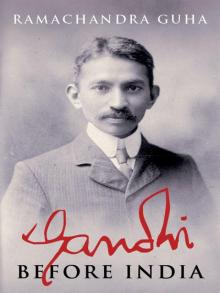 Gandhi Before India
Gandhi Before India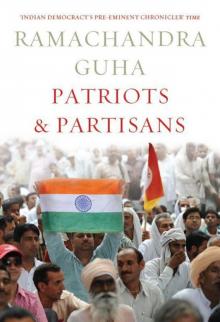 Patriots & Partisans
Patriots & Partisans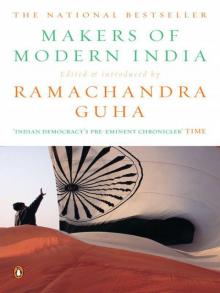 Makers of Modern India
Makers of Modern India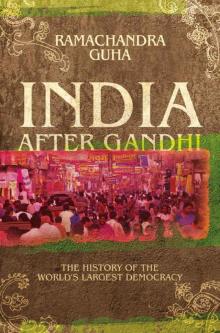 India After Gandhi: The History of the World's Largest Democracy
India After Gandhi: The History of the World's Largest Democracy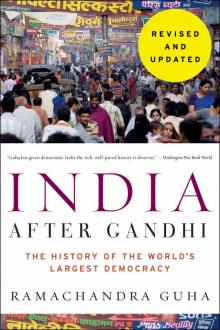 India After Gandhi Revised and Updated Edition
India After Gandhi Revised and Updated Edition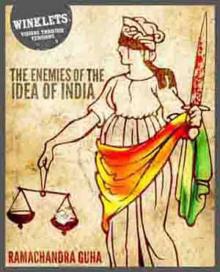 The Enemies of the Idea of India
The Enemies of the Idea of India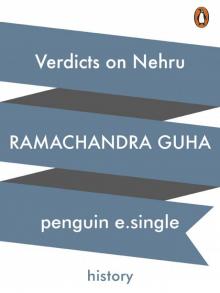 Verdicts on Nehru
Verdicts on Nehru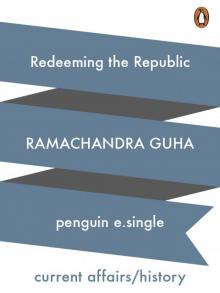 Redeeming the Republic
Redeeming the Republic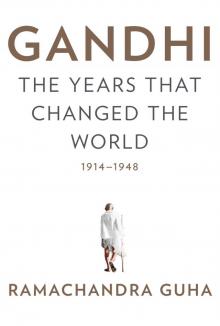 Gandhi
Gandhi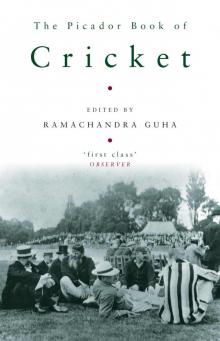 The Picador Book of Cricket
The Picador Book of Cricket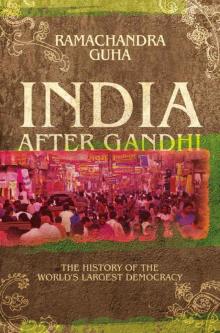 India After Gandhi
India After Gandhi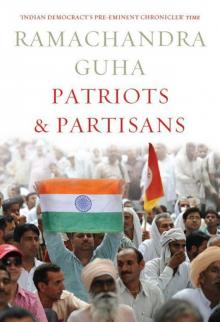 Patriots and Partisans: From Nehru to Hindutva and Beyond
Patriots and Partisans: From Nehru to Hindutva and Beyond